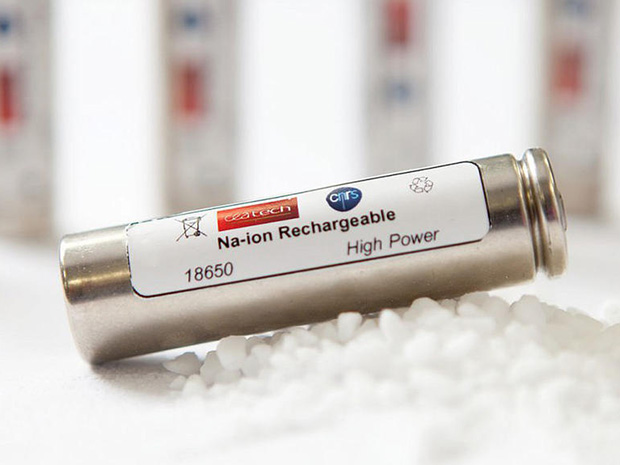Electric vehicles (EVs) are no longer a futuristic concept; they’re here and growing fast. As of 2023, electric vehicle sales have surged by more than 60% compared to the previous year, according to Bloomberg Green. Yet, a common question remains: how can we make EVs more affordable and sustainable? Enter sodium-ion batteries—an innovative battery technology that could potentially revolutionize electric vehicles. In this article, we’ll explore how sodium-ion batteries work, their benefits, current developments, and the potential impact on the EV market.
What Are Sodium-Ion Batteries?
Sodium-ion batteries, as the name suggests, primarily use sodium instead of lithium. But why the switch? Here are some key points:
- Abundance: Sodium is the sixth most abundant element on Earth, making it cheaper and more accessible than lithium.
- Safety Profile: Sodium-ion batteries are less prone to overheating and present fewer fire risks, enhancing their safety.
- Environmental Impact: Sodium mining is less environmentally damaging compared to lithium, which often involves resource-intensive extraction processes.
How Sodium-Ion Batteries Work
Sodium-ion batteries operate similarly to lithium-ion batteries. They consist of:
- Anode: Typically made of carbon or hard carbon.
- Cathode: Utilizes sodium compounds.
- Electrolyte: Facilitates the movement of sodium ions between the anode and cathode.
During charging, sodium ions move from the cathode to the anode, and during discharging, they move back, releasing energy to power the vehicle.
Benefits of Sodium-Ion Batteries for Electric Vehicles
Cost-Effectiveness
Sodium-ion batteries could significantly reduce the cost of EVs. According to a report by InsideEVs, sodium-ion cells could be up to 30% cheaper than their lithium counterparts due to the lower cost of raw materials. This reduction could make EVs more accessible to the average consumer, promoting wider adoption.
Enhanced Safety
The safety of sodium-ion batteries is a game-changer. As noted by Wired, these batteries are less likely to experience thermal runaway, a condition that can lead to battery fires. This makes them not only safer for drivers but also more appealing to manufacturers aiming to minimize recalls and safety concerns.
Sustainability
With growing concerns about the environmental impact of mining, sodium-ion technology offers a more sustainable solution. As PV Magazine highlights, sodium salts can be harvested from seawater, reducing the ecological footprint associated with battery production.
Current Developments in Sodium-Ion Technology
Major Players and Innovations
Several companies and research institutions are investing in sodium-ion technology:
- BYD: The Chinese automaker has already unveiled a prototype EV powered by sodium-ion batteries, aiming for commercial release by 2025.
- CATL: Contemporary Amperex Technology Co., Limited, a leading battery manufacturer, announced plans to mass-produce sodium-ion batteries by 2024.
- Faradion: A UK-based company, Faradion has been at the forefront of sodium-ion development, partnering with global brands to bring this technology to market.
Challenges and Solutions
Despite the promising advantages, sodium-ion batteries face challenges such as lower energy density compared to lithium-ion. However, ongoing research is focused on enhancing the performance of these batteries. Researchers at MIT Technology Review report new cathode materials that could increase energy density by 20%, closing the gap with lithium alternatives.
Practical Guide: What to Expect and How to Prepare
Charging Infrastructure
As sodium-ion technology becomes mainstream, charging infrastructure may need updates. But the good news is that sodium-ion batteries can often use existing lithium-ion charging stations with minor modifications.
Comparing Battery Options
When considering an EV purchase, compare battery options:
- Sodium-Ion vs. Lithium-Ion:
- Cost: Sodium-ion is more affordable.
- Safety: Sodium-ion has a better safety profile.
- Energy Density: Lithium-ion currently holds an advantage, but sodium-ion is catching up.
Where to Buy
As sodium-ion technology matures, expect major EV brands like Hyundai and Ford to offer models equipped with these batteries. Keep an eye on announcements from manufacturers like BYD and CATL for the latest models and release dates.
Conclusion: A Future Powered by Sodium-Ion Batteries
Sodium-ion batteries hold the potential to transform the electric vehicle landscape by making EVs more affordable, safer, and sustainable. As technology advances and more companies invest in sodium-ion research, we may soon witness a shift in the EV market dynamics.
Are you ready to embrace this change? Stay informed, compare your options, and consider the benefits of sodium-ion technology when making your next EV purchase. The future of electric mobility is closer than ever, and sodium-ion batteries might just be the key to unlocking it.

